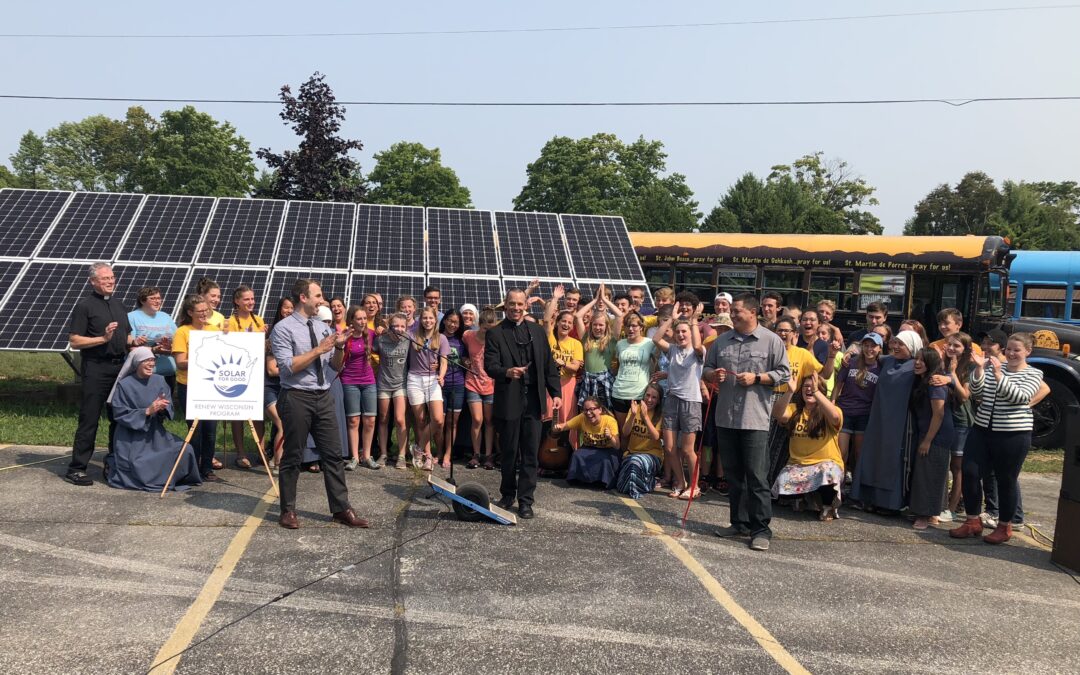
by Sam Dunaiski | Oct 29, 2020 | Community, Local Initiatives, Renewables, Solar, Solar for Good, Sustainable Business
RENEW Wisconsin’s Solar for Good program has awarded over $190,000 in cash grants and materials to Wisconsin nonprofits for installing on-site solar energy systems. Seventeen organizations will install 719 kilowatts of clean, renewable electricity leading to nearly $1.4 million in renewable energy investments in Wisconsin.
The following organizations have been offered Fall 2020 Solar for Good grants to install new solar electric systems:
All Saints Lutheran Church, house of worship, Fitchburg.
Boys and Girls Club of Dane County, after-school youth programming, Madison.
Community Clothes Closet, free clothing provider, Menasha.
Couleecap Inc, poverty alleviation, Westby.
Ezekiel Lutheran Church, house of worship, River Falls.
Friends of Sauk County Fairgrounds, historic preservation, Baraboo.
Grace Evangelical Free Church, house of worship, Viroqua.
Habitat for Humanity of Dane County, affordable housing provider, Madison.
Habitat for Humanity Restore, affordable housing support, Beaver Dam.
Just One More Ministry, food pantry, Glendale.
Milwaukee Habitat for Humanity Restore, affordable housing support, Greenfield.
Plymouth Congregational United Church of Christ, house of worship, Madison.
The BRICK Ministries, poverty alleviation and food pantry, Ashland.
Walnut Way Conservation Corps, community conservation organization, Milwaukee.
Yerkes Future Foundation, education and historic preservation, Williams Bay.
Two organizations have asked to remain anonymous at this time.
This round of Solar for Good grants features a diverse group of organizations from across Wisconsin. The Boys and Girls Club of Dane County will install over 250 panels at their Madison-based facility and plan to demonstrate the benefits of solar energy to the young people they serve. An 11-kilowatt array will be installed at the BRICK Ministries in Ashland with the help of donated solar panels from One Energy Renewables, a large-scale solar developer. And a 60-kilowatt array is planned at the famous Yerkes Observatory in Williams Bay, home of the world’s largest refracting telescope used for astronomical research.
“The grant and the installation of solar panels underscores the ongoing value of Yerkes Observatory as a place for scientific discovery and education,” stated Dianna Colman of Yerkes Future Foundation. “Students and visitors will experience firsthand the impact of solar power…even on a building dating back to 1897.”
In addition to the Couillard Solar Foundation, Solar for Good’s founding funder, this cycle of grants also received backing from the Array it Forward initiative at First Unitarian Society in Madison. The First Unitarian Society won a Solar for Good grant in 2018 and wanted to share the benefits they received from their solar array with other nonprofits across Wisconsin. Array it Forward is made possible through donations solicited from their congregation and the community.
“Solar for Good shares our values and priorities for stabilizing our climate and speeding our transition to renewable energy,” said Carol Phelps, a contributing donor to Array it Forward. “This will make life better for the children of the world…when people unite to tackle climate change, there is great hope for the future.”
The 17 nonprofit organizations are a part of Solar for Good’s 7th round of funding. Since its inception in 2017, Solar for Good has offered solar grants to 96 Wisconsin-based nonprofits.
When each of the solar projects are energized, these nonprofits will have added over 4 megawatts of clean, renewable energy to Wisconsin’s electric mix, enough to power approximately 900 homes. Solar for Good projects will represent a total of $9.2 million of private investments in Wisconsin renewable energy over the past three years.
About Solar for Good RENEW Wisconsin’s Solar for Good initiative fosters the expansion of solar power among mission-based nonprofits and houses of worship in Wisconsin. Through a generous partnership with Couillard Solar Foundation and Array it Forward, RENEW Wisconsin awards grants and solar panels to nonprofit organizations, helping them switch to clean, renewable, solar energy.
About RENEW Wisconsin RENEW Wisconsin is a nonprofit organization which promotes renewable energy in Wisconsin. We work on policies and programs that support solar power, wind power, biogas, local hydropower, geothermal energy, and electric vehicles. More information on RENEW’s website: www.renewwisconsin.org.
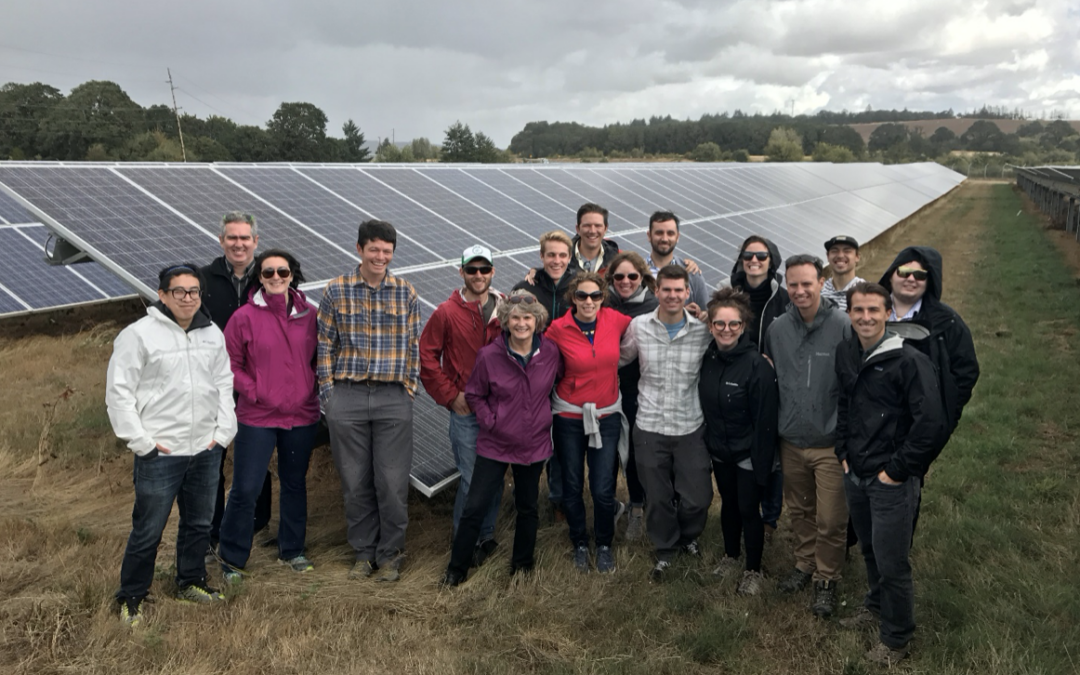
by Guest Blog | Aug 5, 2020 | Community, Renewables, Solar
Submitted by Bill Bailey of Cheq Bay Renewables
Two Ashland, Wisconsin nonprofits are installing solar photovoltaic systems on their facilities. The nonprofits are household names in the Chequamegon Bay area of western Lake Superior – the New Day Advocacy Center and The BRICK Ministries.
New Day Advocacy Center provides free and confidential domestic violence and sexual assault victim services, including shelter and other crisis intervention services. They also provide community prevention education to culture respect and lasting change in community behavior – No More Abuse!
The BRICK’s mission is to compassionately help people in need. They are best known for their Food Shelf Program, but also provide emergency financial resources and referrals with a focus to keep people in their homes through their Benevolence Program
Both organizations have considered solar installations in the past to reduce utility expenses and to generate clean energy. But as each nonprofit had roofs which needed repair, and had purchased or recently moved into newly renovated facilities, they were both financially strained. The solar would have to wait. That was until Eric Udelhofen called from OneEnergy Renewables, a community and utility scale solar project developer based in Seattle, Washington with a satellite office in Madison.
OneEnergy had 35 high-quality, modern solar modules they wanted to donate to a worthy Ashland nonprofit. OneEnergy was the solar developer on the recently constructed 1-megawatt Xcel Energy community solar garden in Ashland. The modules were “bones,” extra parts, left over from purchasing or shipping in bulk quantities, and OneEnergy wanted something good to come from their surplus.
Solar modules represent roughly 15% of the cost of a small solar project. The other 85% is comprised of inverters, racking, miscellaneous additional materials and labor. Jolma Electric of Ashland, who was also involved in the installation of Ashland’s community solar project, joined the project agreeing to perform its installation services “at cost,” and the total project cost was reduced by 22%. Then C&S Design & Engineering, also from Ashland, reduced their engineering cost by 50%, further lowering the total installation price.
Additional funding was needed to cover the remaining balance of the installation. The New Day Board was the first of the two projects to vote to move forward with raising the remaining funds. A GoFundMe site was set up and $6,500 was raised in two weeks. In addition, $3,400 of private checks were received designated for the solar installation. Of the nearly $10,000 of cash donated to the New Day rooftop solar project, OneEnergy employees donated $6,000.
There is another story here. At the core of OneEnergy’s business model is a commitment to serve the communities in which they operate, along with a strident belief that the transition to clean energy will help create a more sustainable and equitable global economy. Not only did the corporation donate the solar modules, but employees stood behind this commitment and donated their personal cash. The status quo of corporate America as an entity has become isolated from their communities. OneEnergy, as well as Jolma Electric and C&S Design and Engineering, are demonstrating an alternative approach, modeling a more enlightened view about the role of companies in society and a commitment to be the change that they wish to see in the world.
So New Day’s project is off and running and now The BRICK has begun its fundraising campaign. An awning style installation was designed by Jolma Electric and C&S Design & Engineering. The donated modules will fill half the south façade of the facility with opportunity to fill the remainder if or when funds allow. The full project would cost $31,990 of which $20,490 has already been raised. A GoFundMe site has been set up for The BRICK to fund the remaining $11,500. If you can help go to: https://bit.ly/3k0IeLm to donate.
During this time of COVID-19, it is encouraging to see that community-building defeats fear, love overcomes hatred, and clean energy offsets fossil fuels. With the support of this community, these two nonprofits, New Day Advocacy Center and The BRICK, are choosing the alternative path, the “culture of service.”
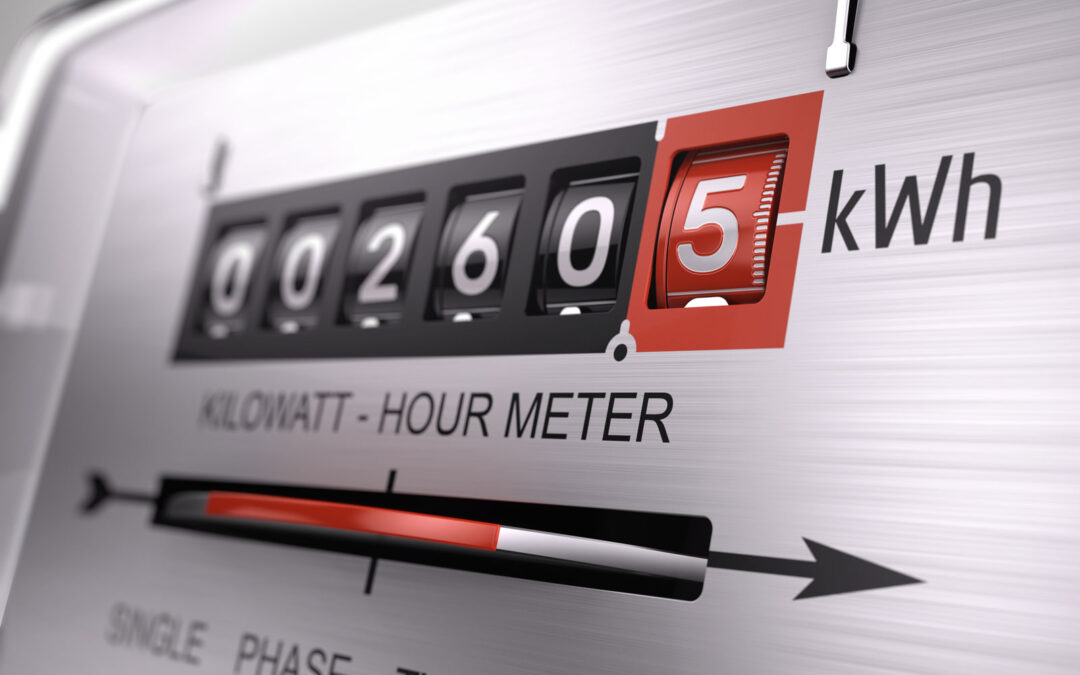
by Heather Allen | Jul 21, 2020 | Advocacy, Policy, RENEW Wisconsin, Renewables, Solar, Utilities
Last week the Federal Energy Regulatory Commission (FERC) dismissed a challenge to state control of net metering. The unanimous decision made on Thursday, July 16, 2020 was great news for RENEW Wisconsin and our members. Homeowners, business and manufacturers that generate their own solar energy can now breathe easy, knowing that the oversight for net metering policy remains in the hands of Wisconsin’s own Public Service Commission.
The New England Ratepayers Association (“NERA”) had petitioned the FERC to take control over net metering policy for the entire country. If the petition were granted, states would have lost the ability to set policy on solar electricity generated by utility customers. The challenge to state control of net metering, the policy that enables energy producers to get bill credit for the extra energy they push back on to the grid, threatened the solar investments of thousands of families and businesses in Wisconsin.
RENEW joined dozens of other clean energy advocacy organizations in a petition to dismiss the issue and encouraged Wisconsin’s political leadership to get involved. Many elected officials from around the country joined in the fight to protect net metering including Wisconsin’s own, Attorney General Josh Kaul.
Check out the background on this story and how RENEW fought to protect Wisconsinites generating clean energy on their homes and businesses.
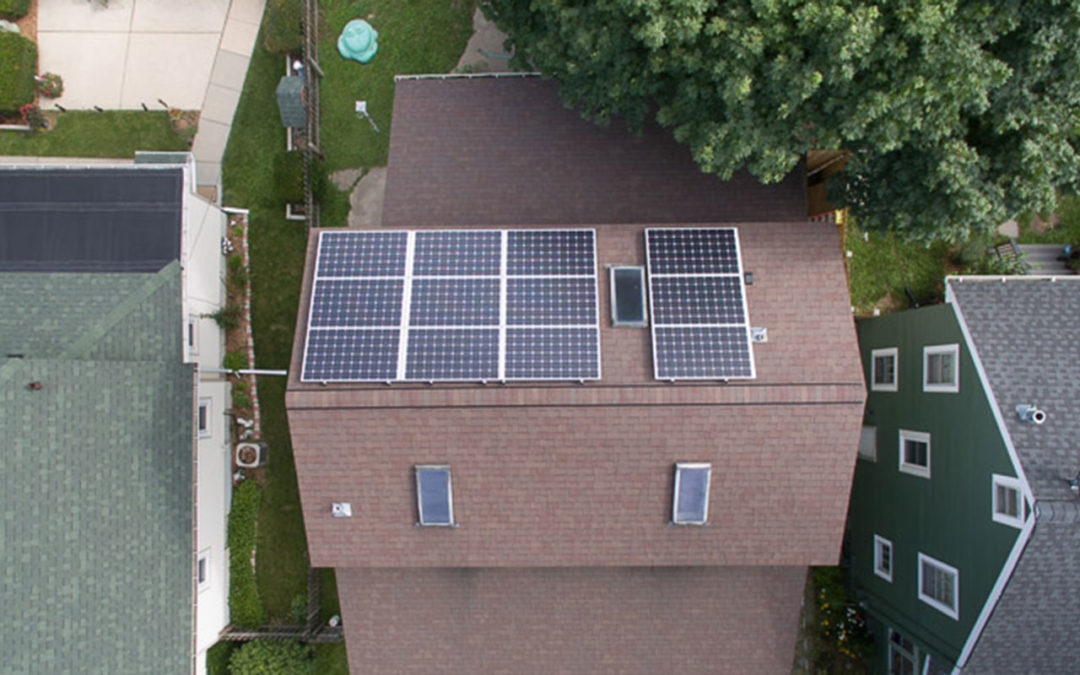
by Heather Allen | Jun 29, 2020 | Policy, RENEW Wisconsin, Solar, Utilities
An upcoming decision by the Federal Energy Regulatory Commission (FERC) has the solar industry, legislators, clean energy advocates, and state regulators extremely worried over the viability of solar power for homeowners and businesses.
The New England Ratepayers Association (“NERA”) has petitioned the FERC to take control over net metering policy for the entire country. If the petition is granted, states would lose the ability to set policy on solar electricity generated by utility customers. NERA’s petition has sparked widespread opposition from states, legislators, individuals and renewable energy businesses. Attorney Generals from 15 states, including Wisconsin’s own Attorney General Josh Kaul, submitted a protest in opposition to the petition.
What inspired 15 attorney generals, three governors, and state officials from across the political spectrum to engage in a federal energy policy debate?
For almost 40 years, states have had the authority to design and implement net metering policies. The NERA petition aims to reverse this long-standing precedent and eliminate Wisconsin’s ability to tailor utility net metering services to best fit local conditions.
What is net metering?
As defined by the Solar Energy Industries Association, net metering is a billing mechanism that credits PV system owners for the electricity they add to the grid. For example, if a residential customer has a rooftop PV system, it may generate more electricity than the home uses during daylight hours. If the home is net-metered, the electricity meter will run backwards to provide a credit against what electricity is consumed at night or other periods when the home’s electricity use exceeds the system’s output. The credit is set at the customer’s retail energy rate. Under this arrangement, customers are only billed for their “net” energy use. This practice enables utility customers who are producing their own electricity to decrease their electricity bills, and it is a powerful tool for driving investment in solar power.
What is at stake here?
According to the U.S. Energy Information Administration, Wisconsin has 3,879 residential net metering households, 874 commercial net metering customers, and 74 industrial net metering customers. These customers are at risk of increased electric bills with the potential loss of net metering.
In addition, the 2019 jobs data from Clean Energy Trust found that before the pandemic hit, Wisconsin employed over 3,798 solar installers as part of the statewide clean energy workforce. With less financial incentive for installing solar, these jobs and other clean energy jobs would be at risk if this petition is granted.
Net metering is good for everyone
RENEW Wisconsin joined other organizations in protesting this petition to wrest control of net metering away from states and put it in the hands of a federal agency. Our protest, authored by attorneys Dave Bender and Carter Hall of Earthjustice with clients Sierra Club and Vote Solar, includes explanations of the value of net metering policies for the electric grid. Here are some essential excerpts from the protest:
- Net metered facilities (such as solar) provide capacity value by avoiding otherwise required generation, transmission and distribution capacity.
- With net metering, solar has become an affordable option for almost everyone, not just high-wealth families. Net metering supports the increased use of distributed solar (such as solar arrays on the rooftop of a house or business), stimulating investment across communities while reducing the environmental and health impacts on low income communities and communities of color, who are disproportionately burdened by current forms of energy production.
- Solar installers operate in a competitive marketplace, driving down prices and passing savings onto consumers.
- Distributed solar has predictable energy production.
- Allegations of cross-subsidies are unfounded and overstated. Net metered customers often reduce their own loads and system loads during the cost-causing peak hours used to allocate costs of retail service, meaning they consume less of the fixed and demand services as measured by cost of service analysis.
Strong bipartisan support for state control of net metering
Millions of individual citizens and businesses across the country have made significant investments to generate their own electricity and have entered long-term contracts premised on the continuation of policies and programs regulated at the state level. Granting the petition would create enormous uncertainty and financial harm for our citizens and businesses at a time when they are already struggling with the economic impacts of the coronavirus.
More than 240 comments in opposition have been submitted to the FERC, and just five comments in support of taking away state control of net metering. Here are a few highlights:
Josh Kaul, Attorney General of Wisconsin said,
“Suddenly changing the rules on Wisconsinites who invested in clean energy for their homes is wrong and bad for the future of clean energy,” said AG Kaul. “The federal government shouldn’t be disrupting state programs that are good for the environment and help consumers save money.” 6/15/20
Frank Knapp Jr. CEO and President of South Carolina Small Business Chamber of Commerce said,
“…Net metering regulation properly resides with the states… We ask that the Commission reject the NERA petition. Moving it forward only serves the purpose of big special interests that find it easier to influence one group of federal commissioners rather than legislators, regulators and consumers in 50 individual states.” 6/11/20
Terry Kilgore, Virginia State Delegate (R-VA-1) wrote,
“This case would set two bad precedents. It would move us closer to nationalized electricity regulation and give more power to unaccountable federal bureaucrats. We, as Virginians, must oppose this and fight to make sure the authority to set energy policy stays vested with Virginia’s General Assembly.” 6/20/20
Net metering is in jeopardy. The petition, if approved, would take the state out of the picture in designing and preserving net metering as we know it. You can count on RENEW to keep working to ensure that net metering policies remain in the hands of our state regulators and are designed to fairly compensate residents and business that have installed renewable energy.
Make a donation today to support this work and all of the ways RENEW Wisconsin is protecting and advancing renewable energy in Wisconsin.
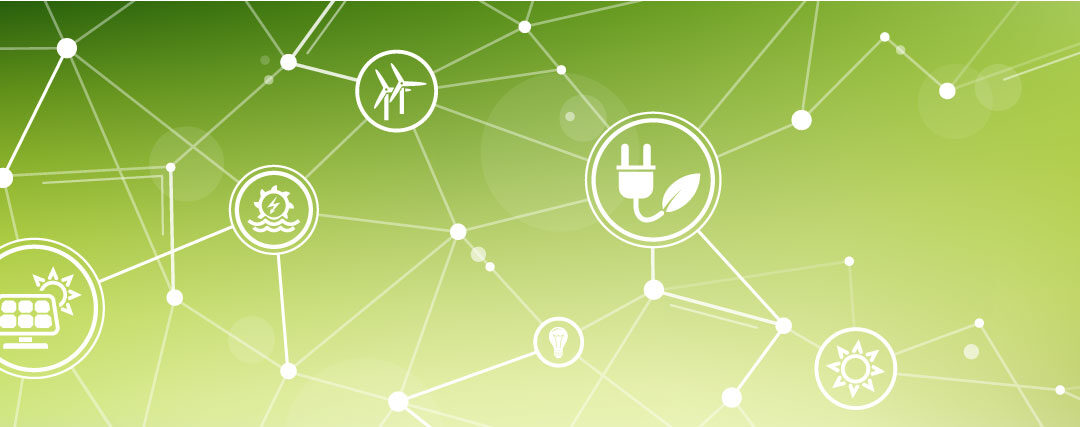
by Jim Boullion | Jun 22, 2020 | Action Alert, Advocacy, Community, Electric Vehicles, Policy, Renewables, Solar
In October of 2019, Governor Tony Evers announced the formation of the Wisconsin Climate Change Task Force. Led by Lt. Governor Barnes, this bi-partisan group represents lawmakers, utilities, agriculture, environmental groups, health officials, and tribes with a goal of developing strategies to help Wisconsin reduce the effects of climate change and reach 100% carbon free electricity generation by 2050.
The Climate Change Task Force has been collecting ideas from various organizations and has worked hard to identify dozens of items that could be implemented. The next step is to hear from Wisconsin residents. The Governor, Lt. Governor, and Climate Change Task Force need your input and support to find the best path forward.
RENEW has identified three key issues that we feel would have the greatest impact and best chances for success. Join this important effort by signing your name in support of these initiatives!
Third Party Financing
Wisconsin should affirm the legality of third party financed distributed energy resources in order to provide equitable access to renewable energy benefits.
Electric Vehicle Infrastructure
Wisconsin should develop a comprehensive plan for transportation electrification.
Expand Focus on Energy
Wisconsin should facilitate the installation of more renewable energy and energy efficiency measures by expanding the Focus on Energy program.
If you have other ideas and would like to contribute more to the Climate Change Task Force, consider taking the following actions:
Provide written comments to the Task Force. Comments must be submitted by July 15th.
Provide live comments at the end of one of the remaining Task Force Subcommittee meetings.
Provide live comments during the Virtual Public Listening Sessions, which will be held on June 23, June 27, July 7, July 9 and July 15.
In August, the Task Force will review all of the comments they receive, and make their recommendations for the final report in September. The report is scheduled to be released on October 31, 2020.
If you have any questions, need more information, or would like help preparing for live comments, please contact Jim Boullion, RENEW’s Director of Government Affairs at jim@renewwisconsin.org or call at (608) 695-7004.
RENEW Wisconsin is a proud partner of Rise Up Midwest, a coalition effort led by MREA promoting renewable energy investment and grid modernization. Rise Up Midwest supports this petition and has highlighted their own policy priorities and programs to advance their mission.
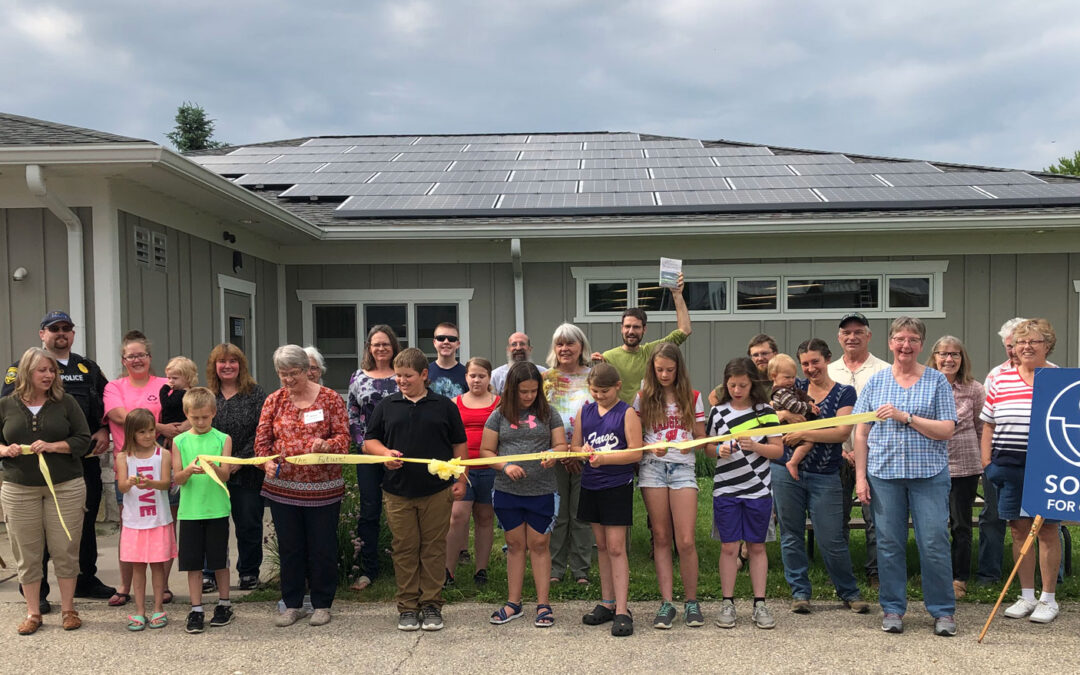
by Sam Dunaiski | Jun 19, 2020 | Local Initiatives, Solar, Solar for Good
RENEW Wisconsin’s Solar for Good program will issue over $150,000 worth of solar panels to Wisconsin nonprofits as part of their spring 2020 funding cycle. These grants will go to 10 organizations across the state that together will install 789 kilowatts of clean, renewable electricity. When completed, these solar projects will lead to nearly $1.8 million in renewable energy investments in Wisconsin.
The following organizations have been offered Spring 2020 Solar for Good grants to install new solar electric systems:
Aptiv Inc., provides support services for youth and adults with disabilities, La Crosse
Assumption Catholic Schools, pre-K to grade 12 private school, Wisconsin Rapids
Covenant Lutheran Church, house of worship, Stoughton
Dodge County Housing Authority, affordable housing provider, Juneau
Grace Congregational United Church of Christ, house of worship, Two Rivers
Green Bay Area Public School District, education, Green Bay
Four organizations have asked to remain anonymous at this time.
This round of Solar for Good grants features a diverse collection of awardees from across Wisconsin. The Green Bay Area Public School District will install a 14-kilowatt array on the Aldo Leopold Community School to educate their students and community about the benefits of solar electricity. A 55-kilowatt solar system will be installed in La Crosse at Aptiv Inc, which will allow them to fund more programs for adults with disabilities. And the Dodge County Housing Authority plans to install nearly 300 solar panels across 10 newly-constructed duplexes at the Oak Grove community in Horicon.
“Dodge County Housing Authority is thrilled to be installing solar panels on every unit at its new Oak Grove, Phase 2 affordable housing community,” said Donna Braun, Executive Director of Dodge County Housing Authority. “We decided to pursue solar panels at this new development because solar will allow our residents to see a significant reduction in their monthly electric bills. As all of the residents of Oak Grove, Phase 2 will be under 60% of the county median income, the electricity savings will make a big difference to these families.”
The 10 nonprofit organizations represent Solar for Good’s 6th funding cycle. This brings the collective impact of this program to 81 Wisconsin nonprofits installing 107 new solar arrays throughout the state. When the installations supported through this funding cycle are energized, Solar for Good will have added 4,030 kilowatts of clean, renewable power to Wisconsin’s electric mix, enough to power over 800 average-sized homes. In total, these solar projects represent more than $9 million of private investment in renewable energy capacity in Wisconsin.
About Solar for Good RENEW Wisconsin’s Solar for Good initiative fosters the expansion of solar power among mission-based nonprofits and houses of worship in Wisconsin. Through a generous partnership with Couillard Solar Foundation, RENEW Wisconsin awards solar panels to nonprofit organizations, helping them switch to clean, renewable, solar energy.
About RENEW Wisconsin RENEW Wisconsin is a nonprofit organization which promotes renewable energy in Wisconsin. We work on policies and programs that support solar power, wind power, biogas, local hydropower, geothermal energy, and electric vehicles. More information on RENEW’s website: www.renewwisconsin.org.






